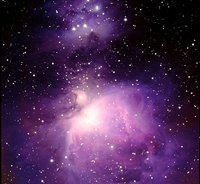
How common are habitable planets in the Universe? We can seek an answer by
searching for planets around other stars, or by probing the conditions in
which planets form. I will review the second approach. Planets are a
direct by-product of the star-formation process. The majority (~90%) of
stars in the sky form in giant molecular clouds along with luminous,
short-lived, but highly destructive massive stars. In these environments,
proto-planetary disks are subjected to collisions, harsh radiation fields,
powerful winds, and explosions. Thus, potential planet forming disks may be
short lived. The Hubble Space Telescope has provided direct evidence for
rapid disk destruction in the Orion Nebula. These observations imply that
either planets form very rapidly, or that planetary systems will be
relatively rare. I will review our understanding of star and planet
formation with an emphasis on recent observational results.
To join using a videoconferencing system:
Please RSVP to Mike Toillion (mike.toillion@nasa.gov) if you will be joining by Polycom.
To view the slides, connect to http://connect.arc.nasa.gov/nai_directors_seminar/
To join using a web browser:
The slides and audio/video for this meeting will be presented using Adobe Connect. To join the meeting, connect to:
http://connect.arc.nasa.gov/nai_directors_seminar/
If you are having problems connecting, you can try joining http://connect.arc.nasa.gov/nai_directors_seminar/?launcher=false, or rebooting your computer, or try joining from another network.
 A Talk With Jim Green
A Talk With Jim Green What Can Extant Genomes Reveal About Early DNA Metabolism?
What Can Extant Genomes Reveal About Early DNA Metabolism? What We Talk About When We Talk About Earth's Oxygenation
What We Talk About When We Talk About Earth's Oxygenation Bowling With Astrobiologists: A Twisted Path Toward the Origin of DNA
Bowling With Astrobiologists: A Twisted Path Toward the Origin of DNA